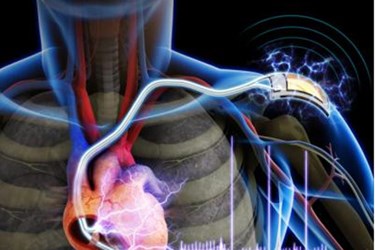Self-Powered Pacemaker Passes First Test
By Joel Lindsey

A team of researchers working with the Korea Advanced Institute of Science and Technology (KAIST) has created and tested a cardiac pacemaker that could be capable of powering itself.
The new device has been designed to use a thin and flexible piezoelectric nanogenerator to turn a patient’s natural and everyday movements into electricity. The energy generated could be used to provide real-time monitoring of heart functions while powering an implanted pacemaker.
“A flexible single crystalline PMN-PT piezoelectric energy harvester [has been] demonstrated to achieve a self-powered artificial cardiac pacemaker,” the team wrote in a paper published recently in the journal Advanced Materials. “The energy harvesting device generates a short-circuit current of 0.223 mA and an open-circuit voltage of 8.2 V, which are enough to meet the standard for not only charging commercial batteries but also stimulating the heart without an external power source.”
Researchers say that there are over a million new pacemakers implanted each year around the world, and that most of these pacemakers require new batteries every seven years. The surgeries required to change pacemaker batteries put patients at potential risk for infection and other complications, but a self-powered pacemaker could significantly reduce the need for additional surgeries.
“For clinical purposes, the current achievement will benefit the development of self-powered cardiac pacemakers as well as prevent heart attacks via the real-time diagnosis of heart arrhythmia,” Keon Jae Lee, a professor in the Department of Materials Science and Engineering at KAIST and a lead researcher on the project, said in a press release published recently. “In addition, the flexible piezoelectric nanogenerator could also be utilized as an electrical source for various implantable medical devices.”
So far, the team has successfully tested the new device on living rats.
In addition to the KAIST project, researchers elsewhere have been working to devise new and less invasive means of powering implantable devices. Earlier this year, for example, Med Device Online wrote about a team of scientists from a number of American universities that was working to develop a piezoelectric power generator capable of generating energy from the natural movements of human lungs and hearts.
More recently, MDO published an article highlighting the efforts of Stanford scientists to create a tiny device that could wirelessly transmit energy to medical devices implanted deep inside a human body.
Image Credit: KAIST
